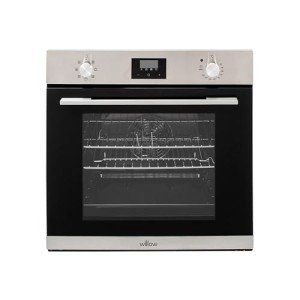Understanding Integrated Oven Sizes: A Comprehensive Guide
Integrated ovens have become synonymous with modern kitchens, offering smooth visual appeals and effective cooking services. As homeowners aim for a seamless look in their cooking spaces, understanding integrated oven sizes ends up being important for enhancing kitchen layouts and making sure efficient cooking. This post looks into the numerous integrated oven sizes available in the market, their measurements, and how to select the ideal one for your home.
What is an Integrated Oven?
An integrated oven is designed to be built into kitchen cabinetry, supplying a structured look that blends easily with the remainder of the kitchen. Unlike freestanding models, integrated ovens can be concealed behind cabinets doors or positioned at eye level, making them a popular option for contemporary cooking areas.
Secret Features of Integrated Ovens
- Space-saving style: Optimizes kitchen area without jeopardizing design.
- Customizable finishes: Available in different colors and products to match kitchen decor.
- Advanced technology: Often equipped with modern-day features, including clever innovation, varying cooking modes, and energy-efficient operations.
Typical Integrated Oven Sizes
When considering an integrated oven, the most vital element to examine is its size. Integrated ovens are available in different dimensions, typically created to fit standard kitchen cabinetry. The following table outlines the most common integrated oven sizes:
| Oven Type | Height (mm) | Width (mm) | Depth (mm) | Cooking Capacity (litres) |
|---|---|---|---|---|
| Single Built-In | 590 | 595 | 550 | 60-70 |
| Double Built-In | 590 | 595 | 550 | 60 (each oven, overall 120) |
| Compact Built-In | 450 | 595 | 550 | 30-40 |
| Combination Microwave | 455 | 595 | 550 | 30-40 |
| Wall Oven | 720 | 600 | 550 | 70-90 |
Considerations When Choosing an Integrated Oven Size
When it pertains to picking the appropriate size for an integrated oven, there are a number of aspects to consider:
- Kitchen Layout: Evaluate your kitchen space and decide where the oven will be integrated into cabinetry.
- Cooking Needs: Consider how typically you prepare and your culinary choices (e.g., baking, roasting).
- Offered Space: Measure readily available cabinets dimensions to guarantee the oven fits comfortably.
- Capability Requirements: Assess the size of meals you typically prepare, particularly for households or when entertaining visitors.
- Future-proofing: Think about incorporating trends such as clever technology or flexibility in usage.
Kinds Of Integrated Ovens
Integrated ovens are available in numerous types, each offering unique benefits:
- Conventional Ovens: Standard cooking functions, appropriate for most cooking approaches like baking and roasting.
- Steam Ovens: Utilize steam for cooking, best for healthier dishes, retaining moisture and nutrients.
- Convection Ovens: Circulate hot air for even cooking, great for baking pastries and numerous dishes all at once.
- Microwave Ovens: Offer fast reheating or defrosting choices and can be integrated with standard ovens for adaptability.
Advantages of Integrated Ovens
Integrated ovens provide many advantages that can boost the cooking experience:
- Aesthetics: Offers a clean design that fits effortlessly into any kitchen decoration.
- Area effectiveness: Maximizes space by using built-in cabinetry.
- Ergonomics: Mounting ovens at eye level improves benefit and security when eliminating hot dishes.
- Increased functionality: Many integrated choices come with functions such as self-cleaning and wise connection.
Regularly Asked Questions (FAQs)
1. What is the standard size for an integrated oven?
The most typical size for a single built-in oven is approximately 590mm in height, 595mm in width, and 550mm in depth.
2. Can I set up an integrated oven in an existing kitchen?
Yes, as long as the existing cabinetry can accommodate the size and specifications of the picked oven, it can be integrated flawlessly.
3. Do integrated ovens have a bigger capacity than freestanding ones?
Normally, integrated ovens have a similar capability to freestanding designs; nevertheless, particular designs may differ. Constantly inspect the specs for optimum space and capability.
4. Are integrated ovens more expensive than freestanding ovens?
Incorporating an oven can be more pricey due to setup and customization. Nevertheless, costs vary based upon brand and technology, so it's vital to compare options.
5. Is maintenance different for integrated ovens?
Upkeep for integrated ovens is comparable to that of freestanding models however might require more care with built-in cabinets parts. russell hobbs built in double oven cleansing and understanding the oven's functions are vital for durability.
Choosing the right integrated oven size is crucial for optimizing kitchen area and improving culinary experiences. By understanding the various configurations readily available and thinking about specific cooking requirements, house owners can perfectly incorporate a modern-day oven into their kitchens. With a range of designs to fit diverse aesthetics and performances, integrated ovens stay a popular option for modern cooking spaces. Whether you're renovating or constructing a new kitchen, picking an integrated oven customized to your needs will make sure years of satisfaction and cooking creativity.

